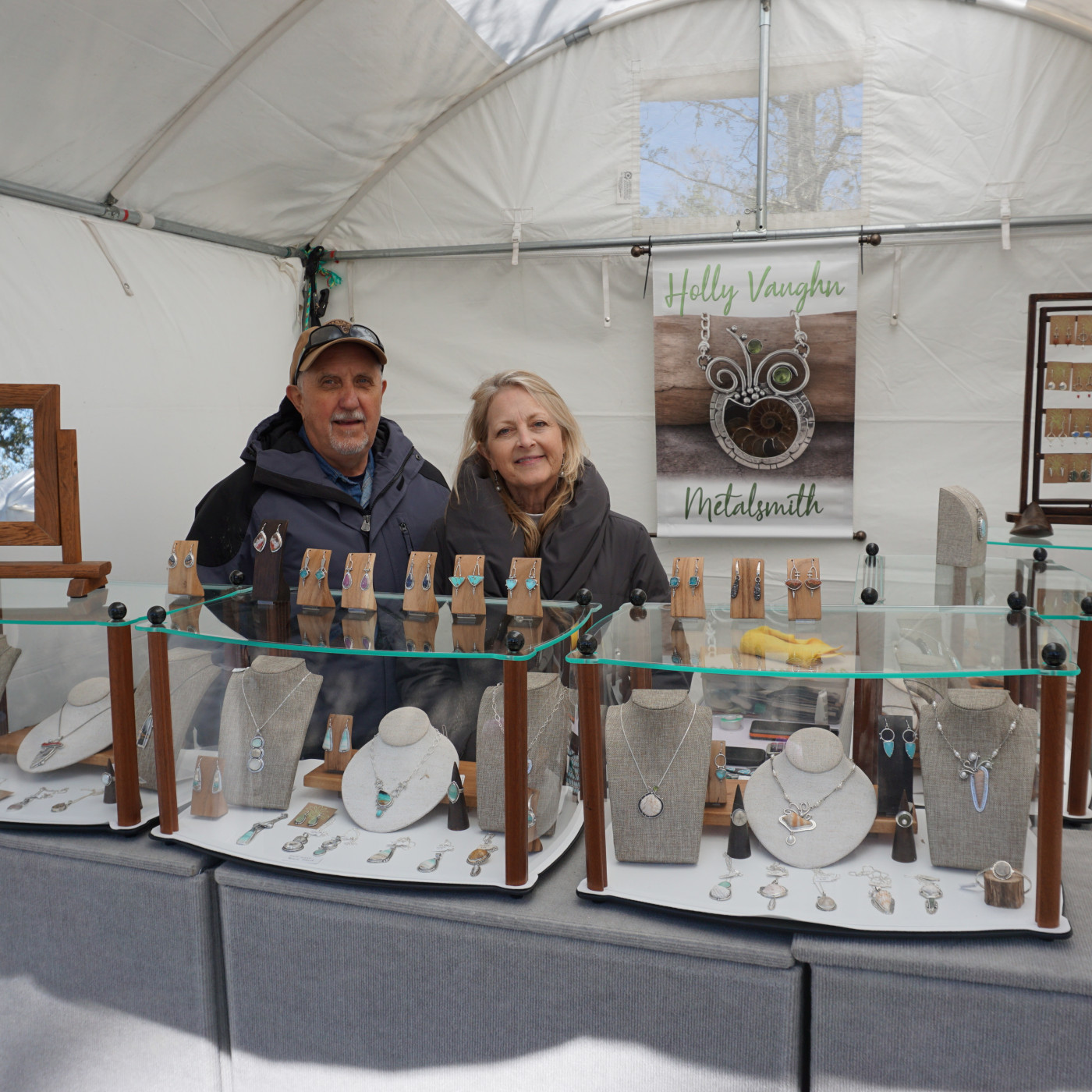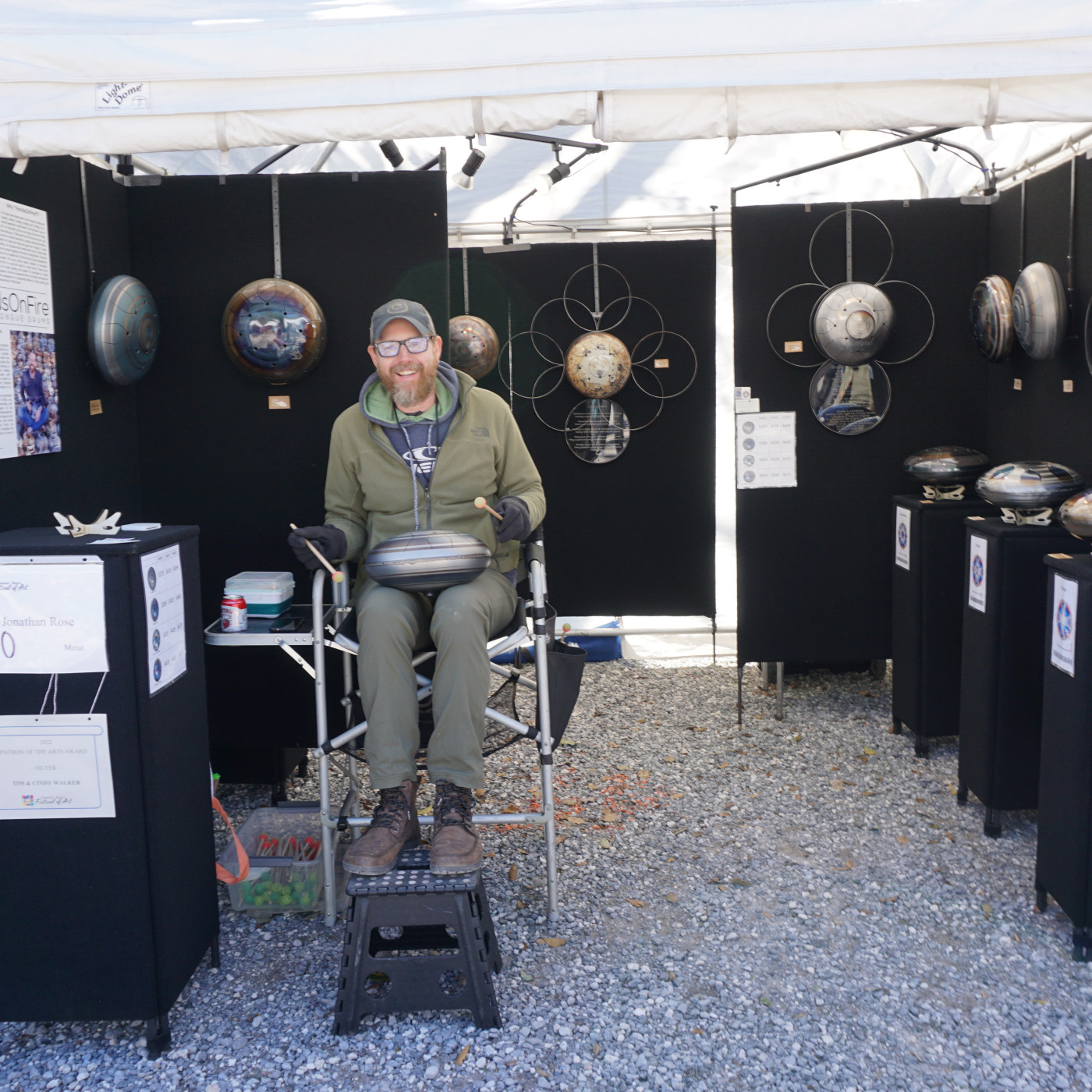Create an Attractive Space How to Display Products, Engage Customer

Photo courtesy of Desiree Blackwell
Our show — the Orange Beach Festival of Art — is located in a very natural setting on the shores of Wolf Bay, in Alabama. Spaces for the artists are located on grass, gravel, or concrete.
Booth shots are so important for us to understand an artist’s style and how they present their art, and we use them to place artists in optimal locations. But maybe more importantly, we need to know what they actually display for sale.
Those who submit art photos in their application but only offer a small percentage of that art in their booth — while offering other/different types of art instead — will not be accepted into the show. If an artist does not supply a booth shot, their application is automatically declined.
The shape of the booth is always square or rectangle, just by nature of the shape of the tent. We place tents on 15-foot centers for ample public viewing space. Artists may make special requests for their locations, and we try to honor those needs when possible. Clean, uncluttered, professional looks are what we strive to have in our show.
Proper, easy-to-read signage is also important so attendees can easily tell who the artist is. We find that signage located up high is preferable to signs attached to the front of the checkout table or on a side wall. Additionally, we’ve noticed guests enjoy meeting the artists. Having the artist visible is preferred.
Best Use of Space
If an artist is offering small items, tiered displays are helpful, as well as making sure some items are at eye level and not lost on a lower table. Professional wall hanging systems are essential.
Lighting is critical. We find lighting to be the most helpful thing for both featuring the art and presenting a certain ambiance in the artist’s tent.
Functional pottery presents well when grouped with matching serving pieces. Mirrors are always a must for jewelers and textile artists. Jewelry artists can display their necklaces and earrings as sets.
The COVID-19 pandemic introduced the need for more air flow, and some artists adjusted their tent spaces to allow for entry and exit points — or at least more access than just a U-shape, where guests might get cornered in the back. Our attendees seemed to like that a lot, which is part of why we kept our booth layout set on 15-foot centers instead of 12.

Photo courtesy of Desiree Blackwell
Smile and Have Fun
Where artists position themselves in their booth (in the back, up front, walking around in the booth) is truly up to what is most comfortable for them. Regardless, they should be ready to engage in a warm, nonpressurized way with guests.
Sitting behind the booth scrolling on a cellphone gives a negative, disconnected vibe, and we find that does not help sales at all. What does work is an inviting booth in which the artist is available but not standing at the front like a guard.
Themed/matching clothing can be super fun, especially for certain art forms. For most artists, bright solid-colored shirts help them stand out in front of dark wall boards and busy artwork.
Good lighting, a floor rug, and a bowl of mints sitting next to your business cards are all things that make people feel warm and welcome. Sharing a tip about your technique or something special about your work — without being too pushy or talking too much — is often helpful, Mostly, smiling and being warm and inviting are critical.
